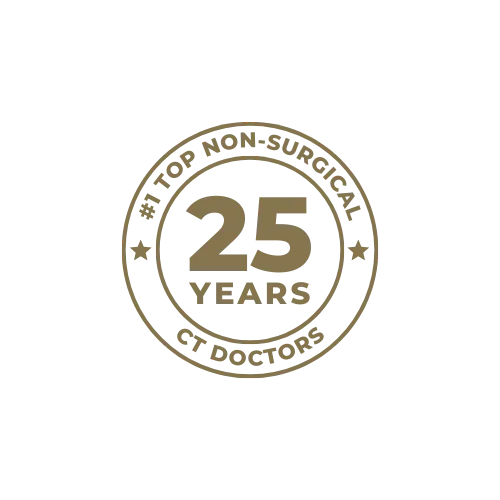Non-Surgical Concierge Care For Today's Chronic Conditions.
Discover Pain Relief The New-Fashioned Way With Connecticut’s #1 Premier Clinic For Non-Invasive Treatments of Severe Neck, Back and Joint Pain.

REGENERATIVE THERAPEUTIC TECHNOLOGY
Our treatment technology boasts state of the art equipment that is non-surgical, non-invasive and has no downtime.
HIGHLY EFFECTIVE TREATMENT PLANS
We handcraft treatment plans geared toward exceeding patient expectations and outcomes.
FASTER TREATMENT TIMES MEAN FASTER RESULTS
Our patients are looking for quick results that can keep them independent or even get back in the game.
State of the art equipment.
Delivering High Quality Concierge Healthcare for 25 years.
Better. Faster. Gentler.
WHAT
WE TREAT.
BACK PAIN
We specialize in non-invasive treatments for chronic back pain that has not responded to other conservative options.

NECK PAIN
Neck pain caused by disc problems, whiplash injuries or more can benefit from our non-surgical treatment options.

KNEE PAIN
We provide long lasting relief to knee pain that hasn’t responded to injections, medications, and surgeries.

HIP PAIN
Hip pain relief is here. If you are suffering with hip or leg pain, give us a call. You will be glad you did.

SHOULDER PAIN
Don't suffer with shoulder pain any longer. Our treatments provide near instant relief.

ZERONA
Lose 3"-9" in just 4 short weeks with the amazing Zerona Laser Lipo. Are you the next success story?

CARPAL TUNNEL
Suffer with numbness and tingling into the hands or wrist no more. Our non surgical treatment approach works.

PLANTAR FASCIITIS
If you have painful feet and have been diagnosed with plantar fasciitis, we have a solution for you.

ARM & LEG PAIN
Arm and Leg Pain like elbow injuries, arm pain, leg and sciatica issues we see it all.

MEET
OUR TEAM.

Dr. JAMES J. DALFINO
PRESIDENT | CLINIC DIRECTOR

SUZANNE
VICE PRESIDENT | OFFICE STAFF
EXPERT
EXPERIENCE.
